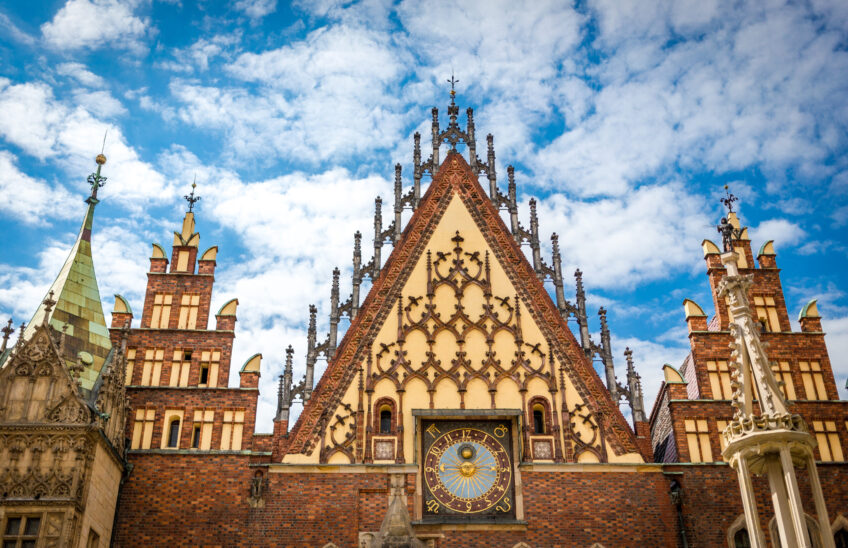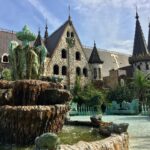Teach English in Poland
Teaching English in Poland is a great opportunity for individuals looking to experience a new culture while also gaining valuable teaching experience. Poland has a growing demand for English as it continues to develop economically, making it an attractive destination for English language teachers. With a rich history and cultural heritage, Poland offers a unique and exciting environment for both personal and professional growth.
In addition to the cultural experience, teaching English in Poland also offers competitive salaries and benefits packages. Schools and language institutions place a high value on quality education and experienced teachers, making it an attractive option for those with a TESOL certification. The country has a supportive community of expatriates and language teachers, providing a network of resources and support for newcomers.
Popular Cities
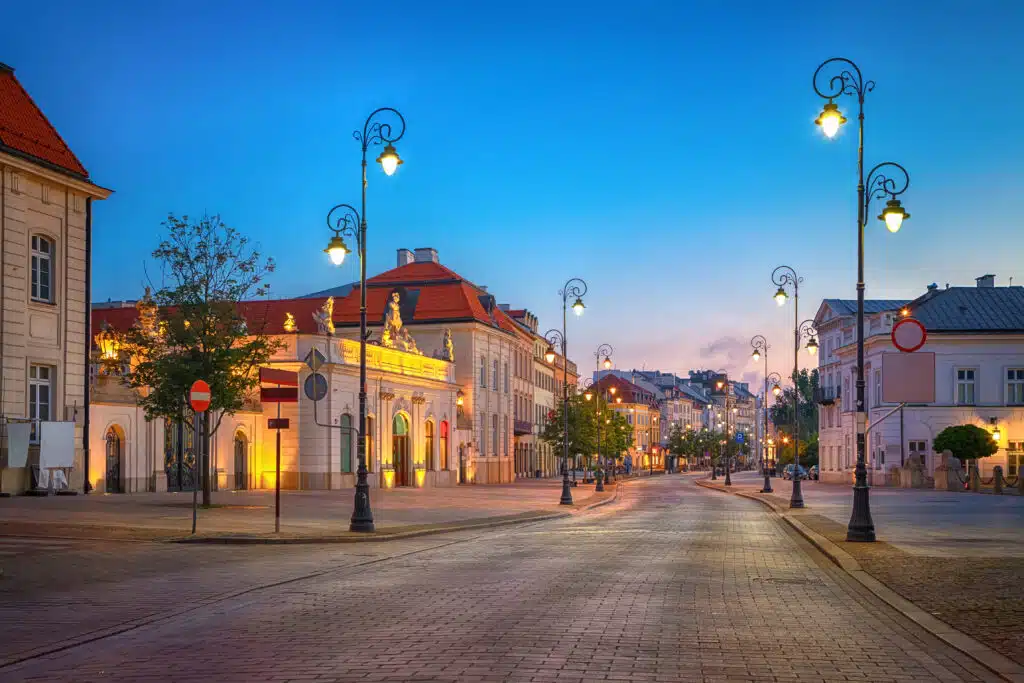
Warsaw
Warsaw, the capital of Poland, is a modern and vibrant city that has risen from the ashes of World War II. It is a hub of political and economic activity, and its many museums, monuments, and historical sites make it an important cultural center.
- Explore the Old Town – The Old Town of Warsaw is a UNESCO World Heritage site and is considered one of the best-preserved examples of a medieval city in Europe. Take a stroll through the charming cobbled streets, visit the King’s Castle, and admire the beautiful Renaissance architecture.
- Visit the Royal Castle – The Royal Castle, located in the heart of the Old Town, is a beautifully restored 16th-century castle that was once the residence of Polish kings. Today, it serves as a museum and is a must-visit attraction for anyone interested in Polish history and culture.
- Take a stroll through Lazienki Park – Lazienki Park is the largest park in Warsaw and is home to a variety of beautiful gardens, lakes, and monuments, including the famous Palace on the Isle. This is a great place for a relaxing walk or picnic in the summer.
- Visit the Warsaw Uprising Museum – The Warsaw Uprising Museum is dedicated to the events of the 1944 uprising, when the Polish resistance fought against the German occupation of the city. This museum provides a comprehensive and interactive overview of the events of the uprising and is a must-visit for anyone interested in World War II history.
- Enjoy the cultural scene – Warsaw has a thriving cultural scene, with a variety of theaters, concert halls, and museums, including the famous National Museum and the Fryderyk Chopin Museum. Take in a classical music concert, visit an art exhibit, or enjoy a play at one of the city’s many cultural venues.
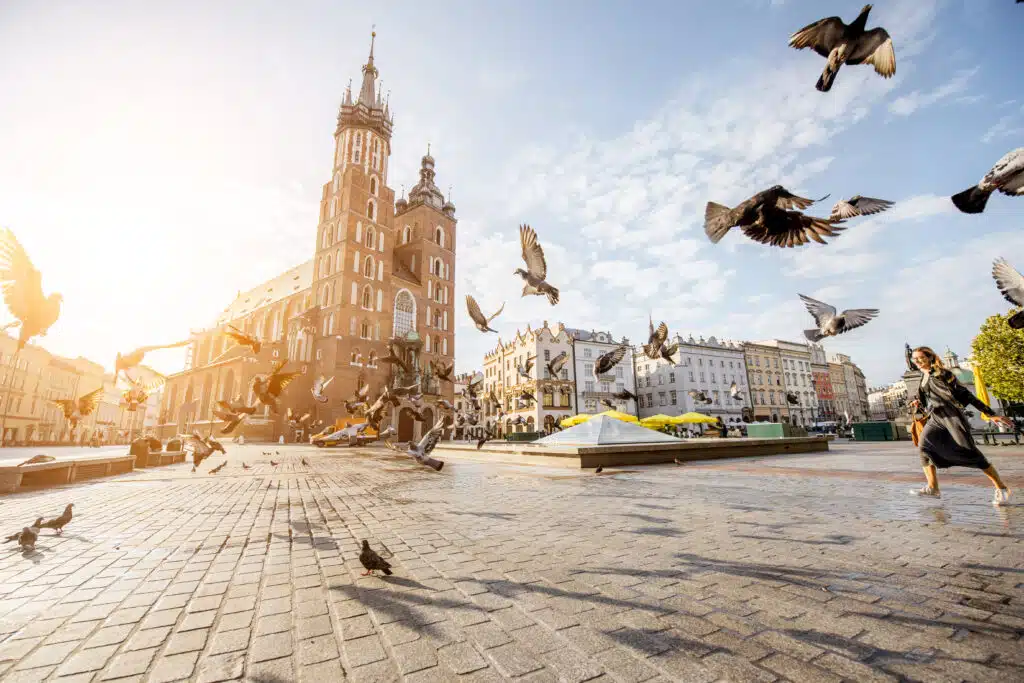
Krakow
- Krakow, located in southern Poland, is a city with a rich cultural heritage and a fascinating history, making it a popular tourist destination. It’s a city that has retained its medieval charm and character, and is often referred to as the “cultural capital” of Poland. Here are five must-do things when visiting Krakow:
- Explore the Main Square – The Main Square, also known as Rynek Glowny, is one of the largest medieval town squares in Europe and is considered the heart of the city. Take a stroll through the square, admire the beautiful Gothic and Renaissance buildings, and visit the famous Cloth Hall.
- Visit Wawel Castle – Wawel Castle is a stunning castle located on a hill overlooking the city. It was once the residence of Polish kings and is now a museum, showcasing the history and culture of Poland. The castle grounds also offer stunning views of the city.
- Explore the Jewish Quarter of Kazimierz – Kazimierz is a historic neighborhood in Krakow that was once the center of Jewish life in the city. Today, it is a hub of cultural activity, with a variety of galleries, shops, and restaurants. Take a stroll through the neighborhood and visit the famous Remuh Synagogue.
- Visit the Auschwitz-Birkenau Museum – The Auschwitz-Birkenau Museum is a must-visit for anyone interested in World War II history. This former concentration camp provides a sobering reminder of the atrocities of the Holocaust and serves as a testament to the human spirit.
- Take a stroll along the Royal Route – The Royal Route is a series of streets and squares that were once used by Polish kings and nobles. Today, it is a popular tourist destination, lined with beautiful buildings, churches, and monuments. Take a leisurely stroll along the route and admire the stunning architecture of the city.
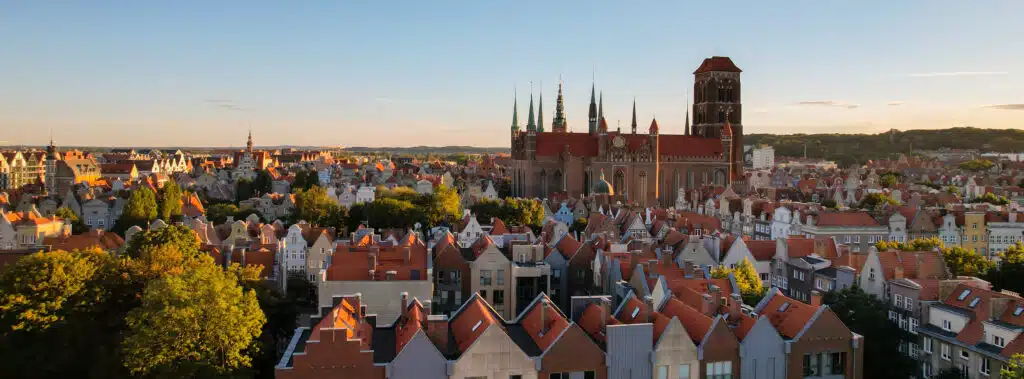
Gdansk
Gdansk is a city located on the Baltic coast, known for its stunning architecture, including the famous Long Lane, and its rich maritime history. The city was a key player in the Solidarity movement, which played a significant role in the fall of the Soviet Union, and its history can be seen in the many museums and monuments that commemorate the events of the past. Gdansk is also famous for its picturesque Old Town and lively cultural scene, making it a popular tourist destination.
- Explore the Old Town – The Old Town of Gdansk is a beautiful medieval city center, featuring a variety of Gothic, Renaissance, and Baroque buildings. Take a stroll through the charming cobbled streets, visit the famous Neptune’s Fountain, and admire the stunning architecture.
- Visit St. Mary’s Church – St. Mary’s Church is the largest brick church in the world and is considered one of the most important landmarks in Gdansk. The church features a stunning interior, with beautiful stained glass windows, and offers stunning views of the city from its tower.
- Explore the Main Town Hall – The Main Town Hall is a beautiful Renaissance building located in the heart of the Old Town. Today, it serves as a museum and is a must-visit for anyone interested in the history and culture of Gdansk.
- Visit the European Solidarity Centre – The European Solidarity Centre is a museum dedicated to the history of the Solidarity movement in Poland, which played a key role in the downfall of communism in Eastern Europe. The museum offers a comprehensive and interactive overview of the events of the movement and is a must-visit for anyone interested in modern Polish history.
- Enjoy the cultural scene – Gdansk has a thriving cultural scene, with a variety of theaters, concert halls, and museums, including the famous National Museum. Take in a classical music concert, visit an art exhibit, or enjoy a play at one of the city’s many cultural venues.

Food
Polish cuisine is a mix of traditional and modern dishes that reflect the country’s rich cultural heritage. Whether you are looking for a hearty meal or a light snack, Polish cuisine has something to offer. Here are a few traditional dishes and ingredients that are a must-try when visiting Poland:
- Pierogi – Pierogi are dumplings filled with a variety of ingredients, including potato and cheese, meat, or fruit. They are a staple of Polish cuisine and are enjoyed by people of all ages.
- Bigos – Bigos is a traditional Polish stew made with sauerkraut, sausage, and a variety of meats and vegetables. It is a hearty and flavorful dish that is perfect for cold winter days.
- Kotlet Schabowy – Kotlet Schabowy is a breaded and fried pork cutlet that is a staple of Polish cuisine. It is usually served with boiled potatoes and a variety of vegetable sides.
- Kielbasa – Kielbasa is a type of sausage that is popular in Poland and is often enjoyed as a snack or as part of a larger meal. There are many varieties of kielbasa, including smoked, fresh, and spicy, making it a versatile ingredient in Polish cooking.
- Zurek – Zurek is a traditional sour soup made with a base of fermented rye flour and served with boiled potatoes, sausage, and a boiled egg. It is a popular dish in Poland, especially during the colder months.
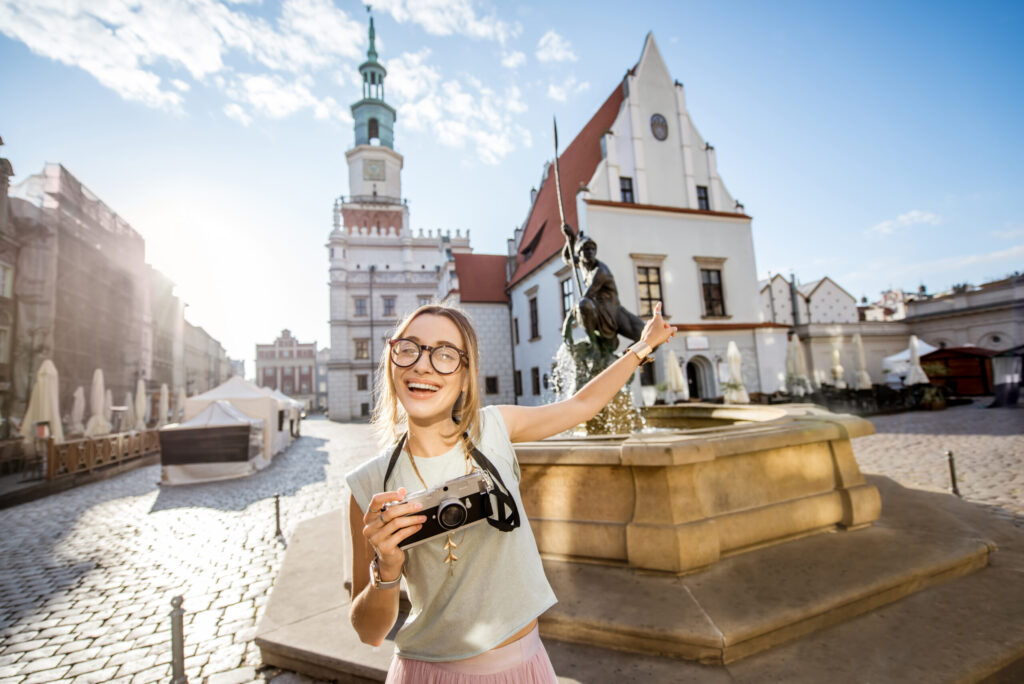
Culture
The Polish people are a warm and friendly people with a proud, and rich cultural heritage and history. Here are some characteristics that are often associated with the people of Poland:
- Hospitality – Polish people are known for their hospitality, and they often go out of their way to make visitors feel welcome in their homes and communities. This trait is especially true in rural areas, where guests are often treated like family.
- Strong work ethic – Polish people have a strong work ethic and value hard work. This is reflected in their attitudes towards their careers and in their approach to daily life.
- National pride – Polish people are proud of their country and its rich cultural heritage. They are quick to share their history, traditions, and customs with others and are passionate about preserving their cultural heritage.
- Sense of humor – Polish people have a great sense of humor, and they enjoy using humor to make light of difficult situations. This can often be seen in their daily conversations, where humor is used to diffuse tension and bring people together.
- Respect for elders – Polish people place a high value on respect for their elders and for authority figures. This is reflected in their attitudes towards family and in their interactions with those in positions of authority.
- Religion – Religion has played a significant role in Polish culture for centuries, with the majority of the population being Catholic. The country is home to many beautiful churches, including the famous Wawel Cathedral in Krakow, which is considered one of the finest examples of Renaissance architecture in Poland.
- Festivals and Celebrations – Poland has a vibrant tradition of festivals and celebrations, reflecting its rich cultural heritage. From the famous Wianki festival in Krakow to the colorful Dyngus Day celebrations in the spring, there is always a reason to celebrate in Poland.
Job Types
English teachers in Poland can work in a variety of settings, including private and public schools, language schools, universities, and private tutoring. Private language schools – These institutions offer classes to students of all ages, and teachers may be responsible for teaching a range of levels and abilities.
- Public schools – These institutions offer classes to students of all ages, and teachers may be responsible for teaching a range of levels and abilities.
- Universities – These institutions offer classes to university students, and teachers may be responsible for teaching a range of levels and abilities.
- Private tutoring – Teachers can work independently and offer one-on-one classes to students.
- Corporate training – teachers can work in companies teaching employees English for business purposes.
Qualifications
To teach English in Poland, a degree is not a strict requirement, but it is preferred by some language schools and institutes. A recognised TESOL Certificate will be necessary.
Visa
To work as an English teacher in Poland, you will need to have a valid work visa. Most schools will help you obtain the correct visa and guide you through the process with visa assistance. Some students will originally enter on a 3-month holiday visa. The process of obtaining a work visa can vary depending on your country of origin, but generally, you will need to provide proof of your qualifications, a valid passport, and a criminal background check. It is important to check the specific requirements for each country and your language school for up-to-date advice.
Get Started!
Teaching English in Poland can be a truly rewarding experience for many reasons. Firstly, Poland is a culturally rich and historically fascinating country, with a vibrant and welcoming population. Secondly, the demand for English language skills is high in Poland, making it a great destination for English teachers. Thirdly, the cost of living in Poland is relatively low, making it an affordable destination for English teachers looking to save money while working abroad. Additionally, the country is well connected to the rest of Europe, making it easy to travel and explore other countries during your time there. Whether you’re looking for a new adventure, the opportunity to immerse yourself in a different culture, or just a change of pace, teaching English in Poland is a great choice.


